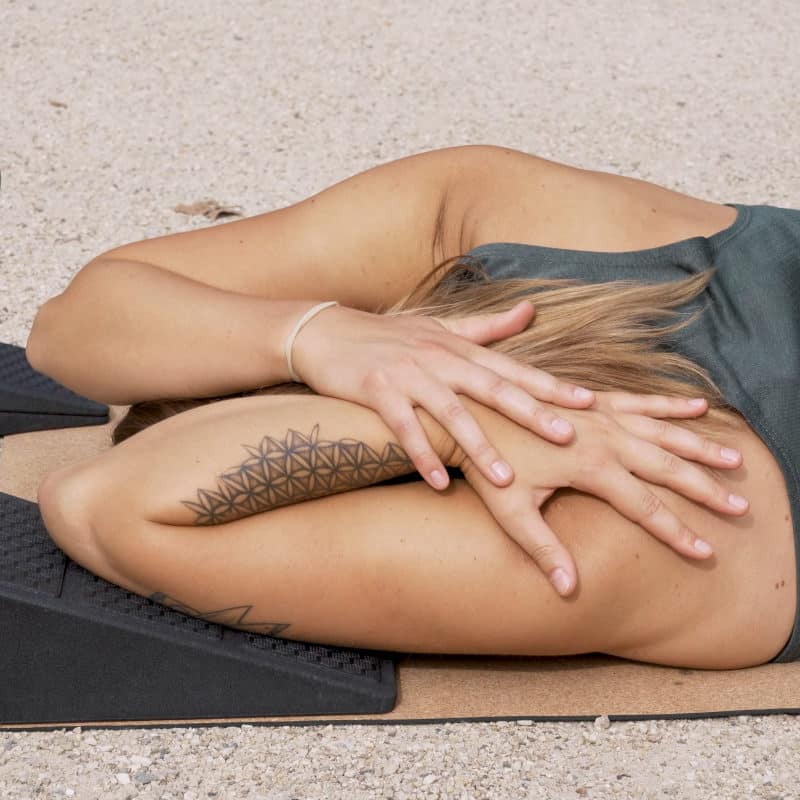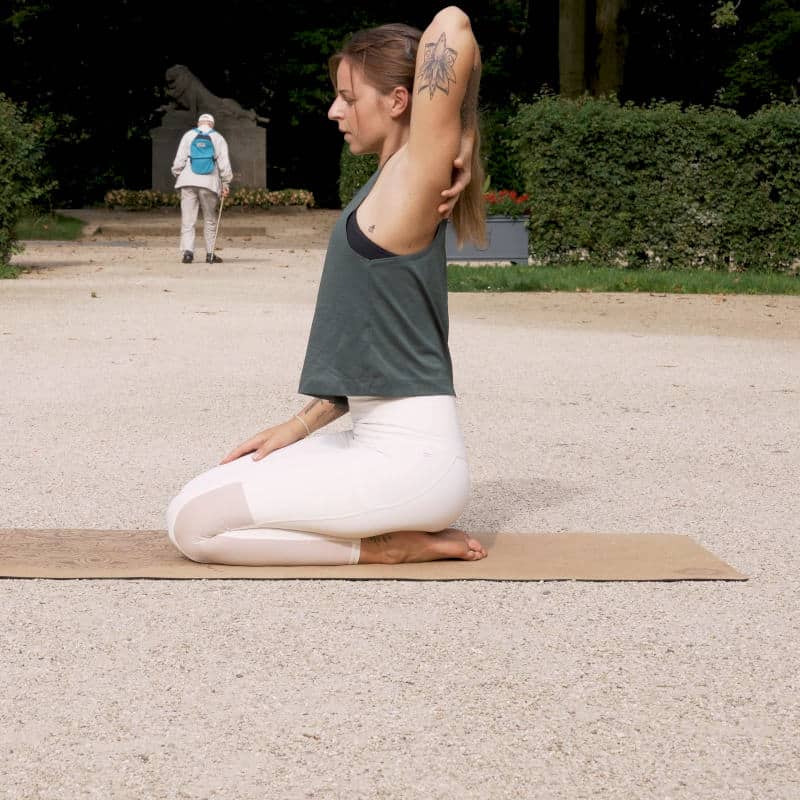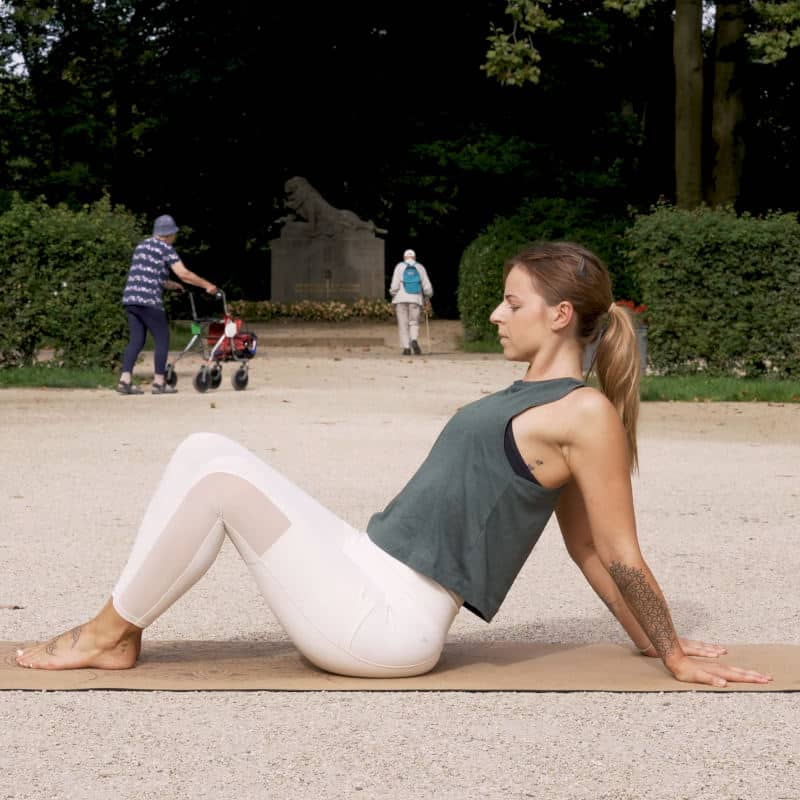Elbow Pain Exercises
Body Part:
Arm
Equipment:
The Knee Hero
Level:
Beginner
Body Part:
Arm
Equipment:
The Knee Hero
Level:
Beginner
If your elbow hurts, consistently stretching your affected arm can help manage the pain. Our 2-step stretching routine takes 5 minutes, and you can do it at home. All you need for these elbow pain exercises is the Knee Hero. If you don’t have a Knee Hero, you can use a yoga block or a stack of books. Regularly performing these stretches can help relieve pain and stiffness in your elbow and restore your range of motion and flexibility. If you want to start stretching now, scroll down to the video. Keep reading if you’d like to learn about your elbow and elbow pain.
The elbow is a hinge joint; it’s very flexible but only moves along one plane. Your elbow is made up of three bones: the humerus, the ulna and the radius. The humerus runs from your shoulder to your elbow. The ulna and radius run from your elbow to your wrist. The ulna is located on the pinky side of your arm, and the radius is on the thumb side. At the end of the radius is the radial head. It’s shaped like a flat doorknob and is connected to the ulna by the annular ligament. The other main ligaments in your elbow are the medial collateral and the lateral collateral, which connect the humerus and the ulna and stabilize the elbow. The muscles surrounding your elbow are the triceps, biceps, flexors, and extensors. We can bend and straighten our wrists and fingers thanks to the flexors and extensors.
For most of us, the activities of our daily lives place enormous demands on our arms. Overworking these limbs leaves the muscles, fascia, tendons, and ligaments prone to injury.
Causes of elbow pain are:
You may have a condition that’s causing your elbow pain. Common conditions that cause elbow pain include:
Symptoms of both conditions are difficulty making a fist or gripping, a red or swollen elbow, and pain that may radiate from the forearm to the wrist. People often develop lateral and medial epicondylitis because of their jobs. 2)
Visit our online shop and get your Knee Hero. While you’re there, take a look the other pain-reliving tools and products we have to offer.
Take me to the shop
Sign up for our free newsletter and discover how to manage your pain yourself. Every two weeks, we’ll deliver follow-along videos and articles to your inbox.


For this stretch, you’ll need our Knee Hero. You can perform this exercise lying down or standing against a wall.
Ready to make this stretch more challenging? Slide the knee opposite your affected arm up.

If you find this position uncomfortable, move your buttocks closer to your ankles.
The key to managing your elbow pain with these stretches is routine. Put yourself on a schedule of 6 days a week and leave 1 day for rest. Continue stretching until your elbow pain subsides.

Sign up for our free newsletter and discover how to manage your pain yourself. Every two weeks, we’ll deliver follow-along videos and articles to your inbox.
Then we would be happy if you shared it with your friends: